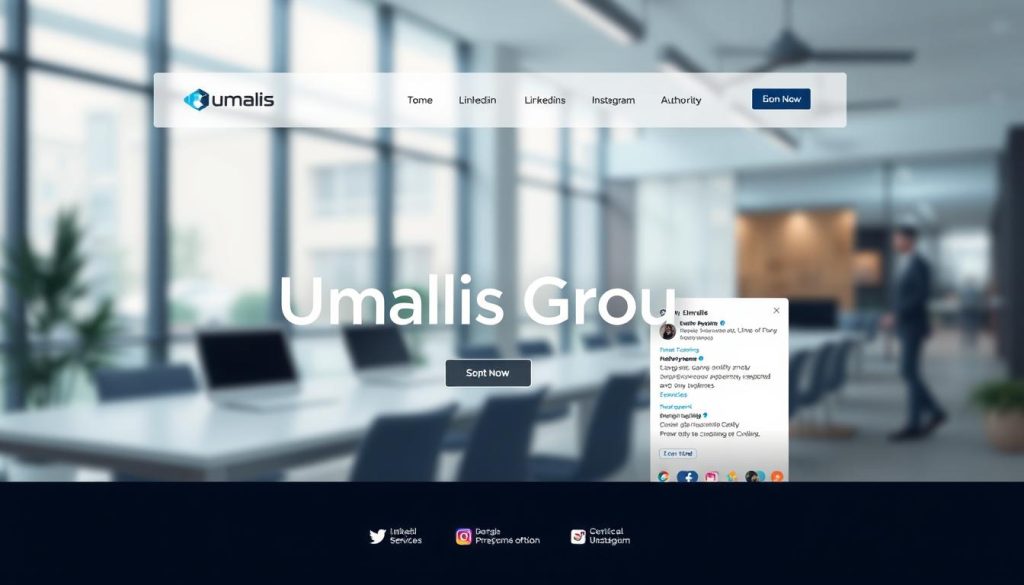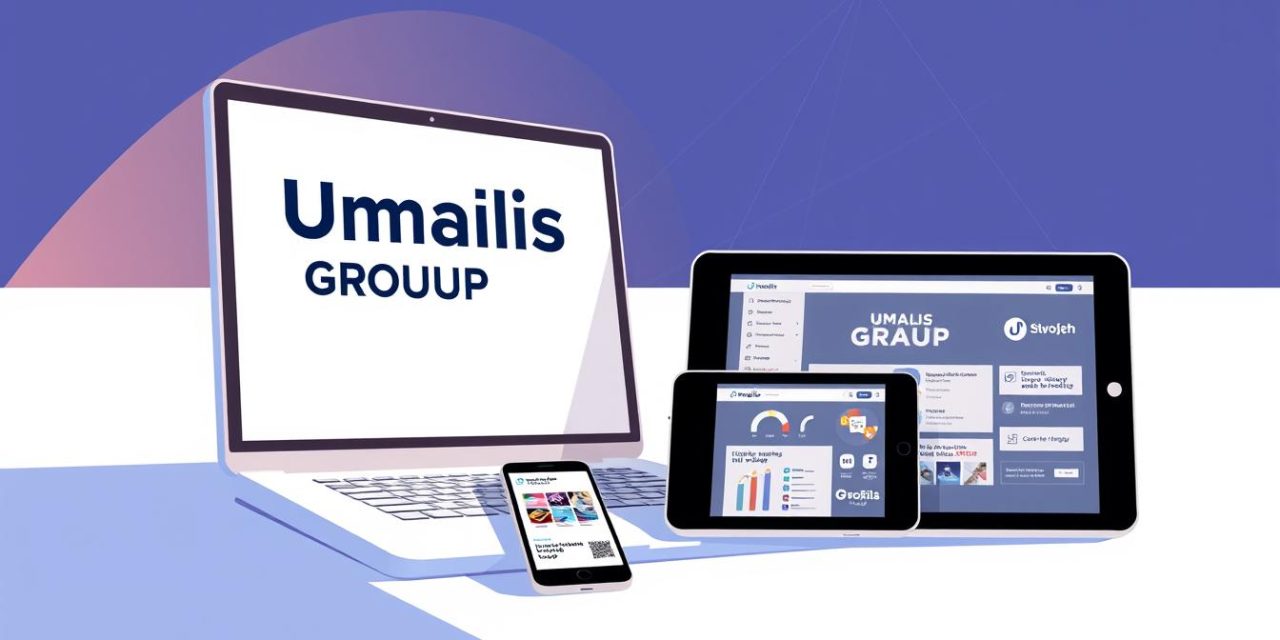A recent study by Insee reveals that 1 in 3 independent workers in France struggle to attract consistent clients. Why? Their virtual identity fails to communicate expertise or reliability. In today’s economy, your digital footprint acts as a 24/7 storefront—it doesn’t just display your skills, but actively builds trust with global audiences.
We’ve seen firsthand how professionals transform their careers by treating their digital identity with the same care as their in-person reputation. Your website, social profiles, and portfolio aren’t just tools—they’re relationship builders that work while you sleep, connecting you to opportunities from Paris to Singapore.
For freelancers and entrepreneurs, standing out means more than visibility. It requires a cohesive strategy that aligns your values with client needs. Imagine your LinkedIn profile convincing a Berlin startup to hire you before you’ve even met. That’s the power of intentional brand positioning.
Table of Contents
Key Takeaways
- Your digital footprint operates 24/7 as your primary business ambassador
- Consistent branding builds credibility faster than any resume
- Global audiences now expect professional accessibility
- Strategic positioning helps overcome market saturation
- Every online interaction contributes to long-term career security
The Importance of a Strong Online Presence
In today’s interconnected economy, professionals without a visible digital identity risk becoming irrelevant. Your virtual portfolio acts as a permanent storefront, connecting you to decision-makers from Lyon to Dubai while you focus on core work.
Visibility Beyond Borders
Geographical limits vanish when your expertise lives online. A graphic designer in Marseille can now collaborate with startups in Montréal, thanks to platforms showcasing their work 24/7. This constant accessibility turns casual searches into concrete opportunities.
We’ve seen consultants triple their client base simply by maintaining updated LinkedIn profiles. Your digital footprint doesn’t sleep—it markets your skills during coffee breaks, client meetings, and even vacations.
Trust Through Transparency
Credibility grows when clients find your certifications, project results, and peer endorsements in one place. Share case studies that demonstrate real-world impact. A web developer’s GitHub repository often speaks louder than any resume.
Authentic client testimonials build confidence faster than traditional pitches. Regular blog posts about industry trends position you as a knowledgeable resource, not just another service provider. This strategic approach transforms casual visitors into long-term partners.
Your digital identity isn’t just about being seen—it’s about being chosen. Professionals who master this balance secure 37% more recurring contracts according to recent European freelance surveys.
How to Master « online presence branding » for Independent Careers

Crafting a standout digital persona begins with strategic clarity and audience insight. The most successful independent professionals treat their virtual identity like a precision tool—sharp, purposeful, and aligned with their career vision.
Defining Your Goals and Unique Value
What do you want your digital footprint to achieve? Start by setting specific objectives—whether attracting premium clients or establishing niche expertise. A Paris-based UX designer might aim to secure 5 international contracts quarterly, while a Lyon marketing consultant could focus on becoming the go-to resource for eco-conscious startups.
Your unique value shines through when you articulate:
| Element | Example | Impact |
|---|---|---|
| Core Skills | Bilingual copywriting | Attracts global clients |
| Problem Solving | Streamlining e-commerce workflows | Reduces client operational costs |
| Differentiators | AI-powered market analysis | Delivers 30% faster insights |
Identifying Your Target Audience
Effective communication starts with deep listening. Map your ideal client’s journey from initial need recognition to final decision. A Marseille-based financial advisor discovered their clients:
- 70% research tax strategies on LinkedIn
- 45% prefer video explanations over text
- Decision timelines shortened by 3 weeks with case studies
This knowledge shapes where and how you present your expertise. Regular audience analysis ensures your messaging evolves with market shifts, keeping your digital presence relevant and results-driven.
Building Your Digital Identity

Your digital identity acts as the blueprint for career growth in the modern marketplace. Unlike temporary job platforms, it becomes your permanent professional home—a space you control and refine over time.
Creating a Professional Website
Start with three non-negotiable elements: a crisp bio, visual portfolio, and visible contact details. A Marseille-based architect increased inquiries by 40% after adding client success stories to their homepage. Your website isn’t just a business card—it’s a conversion engine that works while you focus on projects.
Ensure mobile responsiveness and fast loading speeds. Google prioritizes sites that deliver seamless experiences across devices. Include keywords naturally in page titles and project descriptions to improve search visibility without sacrificing readability.
Optimizing Social Media Profiles
Consistency transforms scattered profiles into a unified identity. Use matching profile photos and color schemes across LinkedIn, Instagram, and professional forums. A Bordeaux copywriter gained 120% more followers by aligning her Twitter tone with her website’s conversational style.
Regularly update your bio to reflect evolving skills. Add links to recent case studies or articles. This living portfolio approach keeps your social media relevant to client needs while maintaining your authentic professional voice.
Crafting a Consistent Content Strategy
Professionals who publish strategic content weekly see 3x more client inquiries than those with irregular updates. Your content acts as a bridge between expertise and audience needs—when planned thoughtfully, it becomes a career accelerator that works autonomously.
Developing Valuable Content
Start by mapping content to your audience’s pain points. A Lyon-based HR consultant increased client retention by 60% after creating guides about remote team management. Focus on these elements:
- Actionable how-to articles addressing common challenges
- Case studies demonstrating measurable results
- Trend analyses with practical implementation tips
Balance educational and promotional material using the 80/20 rule—provide free value 80% of the time, reserving 20% for service highlights. This approach builds trust while naturally showcasing your capabilities.
Leveraging Multiple Content Formats
Diversify your media mix to match different learning styles:
| Format | Best For | Frequency |
|---|---|---|
| Blog posts | Deep technical explanations | Weekly |
| Videos | Software tutorials | Biweekly |
| Podcasts | Industry discussions | Monthly |
Repurpose core ideas across formats to maximize reach. A single market research report could become an infographic for LinkedIn, a video summary for YouTube, and a podcast episode featuring expert commentary.
Utilizing Social Listening for Strategic Insights
Harnessing the power of social conversations can unlock hidden opportunities for independent workers. Social listening transforms scattered chatter into actionable intelligence, revealing what clients truly value and fear. Unlike traditional research, it captures real-time reactions across platforms—a goldmine for career-focused professionals.
Monitoring Conversations and Trends
Track industry keywords across social media to spot emerging patterns. A Marseille-based consultant discovered 60% of local startups discussed « remote team burnout » weekly—intel that shaped her service offerings. Free tools like Google Alerts identify trending topics, while premium platforms map competitor strategies.
Effective monitoring requires three steps:
- Define core keywords (services, industry terms, competitor names)
- Set up daily alerts across LinkedIn, Twitter, and niche forums
- Review weekly reports to identify opportunity patterns
Analyzing Sentiments and Feedback
Sentiment analysis reveals emotional undercurrents in client discussions. When a Bordeaux photographer noticed recurring frustrations about « rigid pricing models, » he introduced flexible packages—resulting in 25% more bookings.
Use this framework to decode feedback:
| Metric | Tool Example | Strategic Use |
|---|---|---|
| Positive Mentions | Brand24 | Identify brand advocates |
| Criticism Patterns | Hootsuite | Improve service gaps |
| Neutral Queries | AnswerThePublic | Create targeted content |
This approach turns raw data into valuable information for career decisions. Professionals who implement social listening strategies report 40% faster client acquisition according to recent EU freelance surveys.
Managing Online Reputation and Crisis Response
Your professional reputation now lives in search results and social feeds—guard it like your career depends on it. Four out of five professionals successfully remove unwanted content through polite requests, proving prevention beats damage control. This vigilance protects your most valuable career asset: trust.
Proactive Reputation Management
Set up Google Alerts for your name and services. Track mentions across LinkedIn and industry forums. A Toulouse translator discovered clients discussing « urgent localization needs » through alerts—then created targeted content addressing those pain points.
Regularly publish positive case studies and client testimonials. These materials push unfavorable content down search rankings. Think of it as digital reputation insurance—an investment that pays dividends through client confidence.
Effective Crisis Communication
When issues arise, respond within 24 hours. A Marseille consultant contained a pricing misunderstanding by:
- Acknowledging concerns publicly
- Providing clear documentation
- Offering personalized follow-ups
Transparency turns critics into allies. 80% of professionals resolve disputes through direct communication, according to EU freelance studies. Prepare response templates for common scenarios to maintain consistency under pressure.
Remember: Your digital footprint reflects your professionalism. By combining vigilant monitoring with strategic content creation, you control what people find when they search for your expertise.
Tracking Key Metrics and Performance Indicators
Numbers tell the real story of your professional impact. Independent workers who monitor their key metrics gain a strategic edge—they spot what resonates with clients and adjust their approach before opportunities slip away. This data-driven mindset turns guesswork into precision.
Evaluating Engagement and Sentiment
Focus on three core measurements: interaction rates, audience growth patterns, and emotional feedback. A Paris-based consultant discovered 68% of her clients found her through LinkedIn posts with clear calls-to-action—insights that reshaped her content calendar.
Track weekly engagement rates to identify top-performing content types. Pair this with sentiment analysis tools that detect positive/neutral/negative reactions. When a Marseille freelancer noticed recurring praise for his video tutorials, he doubled production—resulting in 40% more project inquiries.
Use these insights to refine your social media engagement strategies. Combine quantitative data with qualitative feedback to make informed decisions that align with market demands. Professionals who master this balance see 2x faster career growth according to recent French independent worker surveys.
FAQ
Why is a strong online presence critical for independent professionals?
A robust digital identity amplifies your visibility, connects you with global opportunities, and builds trust with clients. It acts as a 24/7 portfolio that showcases your expertise, making it easier for decision-makers to find and choose you.
How do I define my unique value proposition?
Start by identifying your core strengths, niche expertise, and what problems you solve for clients. Align these with your audience’s needs using tools like LinkedIn bios, personal websites, or client testimonials to communicate your distinct value clearly.
What platforms are best for optimizing social media profiles?
Focus on platforms where your audience spends time. LinkedIn excels for B2B networking, Instagram for visual industries, and X (Twitter) for real-time engagement. Use consistent branding elements like logos, colors, and tone to reinforce recognition.
How can I create content that resonates with my audience?
Share actionable insights, case studies, or industry trends that address your audience’s pain points. Mix formats like videos, blogs, and infographics to cater to different preferences. Tools like Canva or Loom simplify content creation without heavy resources.
Why is social listening important for strategic decisions?
Monitoring conversations reveals emerging trends, client concerns, and competitive gaps. Tools like Brand24 or Hootsuite track sentiment, helping you adapt your strategy proactively and stay ahead in your field.
How do I handle negative feedback or a reputation crisis?
Respond promptly and professionally, acknowledging concerns while offering solutions. Establish a crisis plan in advance, and use tools like Google Alerts to detect issues early. Transparency and accountability often turn challenges into trust-building moments.
What metrics should I track to measure success?
Focus on engagement rates, website traffic, conversion rates, and sentiment analysis. Tools like Google Analytics or Sprout Social provide actionable data to refine your strategy and prove ROI to potential clients.





